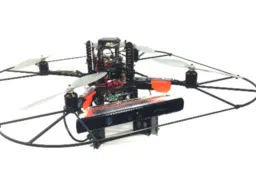Electrical communication in the brain works not only like a digital computer, but also like analogue tape. How this occurs has been unravelled by researchers at The Australian National University’s John Curtin School of Medical Research.
Their studies suggest that the brain operates in a much more sophisticated manner than being purely digital, and their insight could lead to a better understanding of brain disorders such as epilepsy.
The brain undertakes remarkably complex tasks orchestrated by more than 100 billion nerve cells. Each nerve cell can be considered as a communication device, like a telephone, connected to other nerve cells by cables known as axons.
Traditionally it was thought that the signals in the axons came in the form of all-or-none electrical impulses, called “action potentials”. And the analogy of the brain as a computer arose from the idea that the brain uses only this “digital” form of communication.
“It has been known for a long time that single nerve cells generate (digital) action potentials and forward these signals rapidly to other cells,” says Maarten Kole, an ANU research fellow. “While this is a key step in nerve cell communication, researchers have been unable to explain how and where in the nerve cell these signals are generated, or even why?”
The researchers recorded the local electrical activity generated in the axon, the main output region of nerve cells. “Although this work was technically challenging, it was worth the effort. The results revealed to us an unknown realm of complexity.”
The complexity arises from the precise location and properties of the channels in the axon membrane which allow the flow of electrically charged ions into and out of nerve cells. This is what underlies the generation of electrical activity in the brain. What the researchers found was that the pattern of opening of the channels in time and space can influence the form of the signal. So, at the point where the signals are generated, they can take different forms—some were very brief sharp spikes, like a typical digital impulse, others were of longer duration.
Until now it has been assumed that action potentials were digital events with information conveyed in their number and timing, similar to the all-or-none nature of transistors in computers. In contrast, analogue systems represent signals changing continuously. The new findings indicate how signalling in nerve cells can take both digital and analogue forms.
“We not only saw that nerve impulses are able to send out signals in an analogue manner, but we also found this could be perceived by neighbouring nerve cells if located close enough.” The more closely cells are connected to each other, the more information can be received from the analogue signal.
By continuing these studies of the region of nerve cells where electrical activity originates, Maarten hopes to obtain useful insights into brain disorders, such as epilepsy, when synchronised electrical activity is spread through nerve networks in an uncontrolled and hyperactive manner.
Maarten Kole is one of 16 early-career scientists chosen for Fresh Science, a national program sponsored by the Federal and Victorian governments.
Axon initial segment Kv1 channels control axonal action potential waveform and synaptic efficacy.
Division of Neuroscience, John Curtin School of Medical Research, Australian National University, Canberra, ACT 0200, Australia.
Action potentials are binary signals that transmit information via their rate and temporal pattern. In this context, the axon is thought of as a transmission line, devoid of a role in neuronal computation. Here, we show a highly localized role of axonal Kv1 potassium channels in shaping the action potential waveform in the axon initial segment (AIS) of layer 5 pyramidal neurons independent of the soma. Cell-attached recordings revealed a 10-fold increase in Kv1 channel density over the first 50 microm of the AIS. Inactivation of AIS and proximal axonal Kv1 channels, as occurs during slow subthreshold somatodendritic depolarizations, led to a distance-dependent broadening of axonal action potentials, as well as an increase in synaptic strength at proximal axonal terminals. Thus, Kv1 channels are strategically positioned to integrate slow subthreshold signals, providing control of the presynaptic action potential waveform and synaptic coupling in local cortical circuits.
Action potential generation requires a high sodium channel density in the axon initial segment.
Division of Neuroscience, John Curtin School of Medical Research, Australian National University, Garran Road, Canberra ACT 0200, Australia.
The axon initial segment (AIS) is a specialized region in neurons where action potentials are initiated. It is commonly assumed that this process requires a high density of voltage-gated sodium (Na+) channels. Paradoxically, the results of patch-clamp studies suggest that the Na+ channel density at the AIS is similar to that at the soma and proximal dendrites. Here we provide data obtained by antibody staining, whole-cell voltage-clamp and Na+ imaging, together with modeling, which indicate that the Na+ channel density at the AIS of cortical pyramidal neurons is approximately 50 times that in the proximal dendrites. Anchoring of Na+ channels to the cytoskeleton can explain this discrepancy, as disruption of the actin cytoskeleton increased the Na+current measured in patches from the AIS. Computational models required a high Na+ channel density (approximately 2,500 pS μm-2 at the AIS to account for observations on action potential generation and backpropagation. In conclusion, action potential generation requires a high Na+ channel density at the AIS, which is maintained by tight anchoring to the actin cytoskeleton.





 Fresh Science is on hold for 2022. We will be back in 2023.
Fresh Science is on hold for 2022. We will be back in 2023.